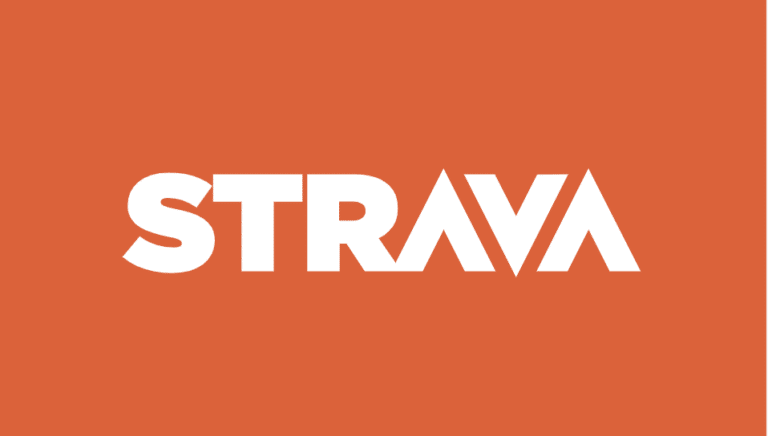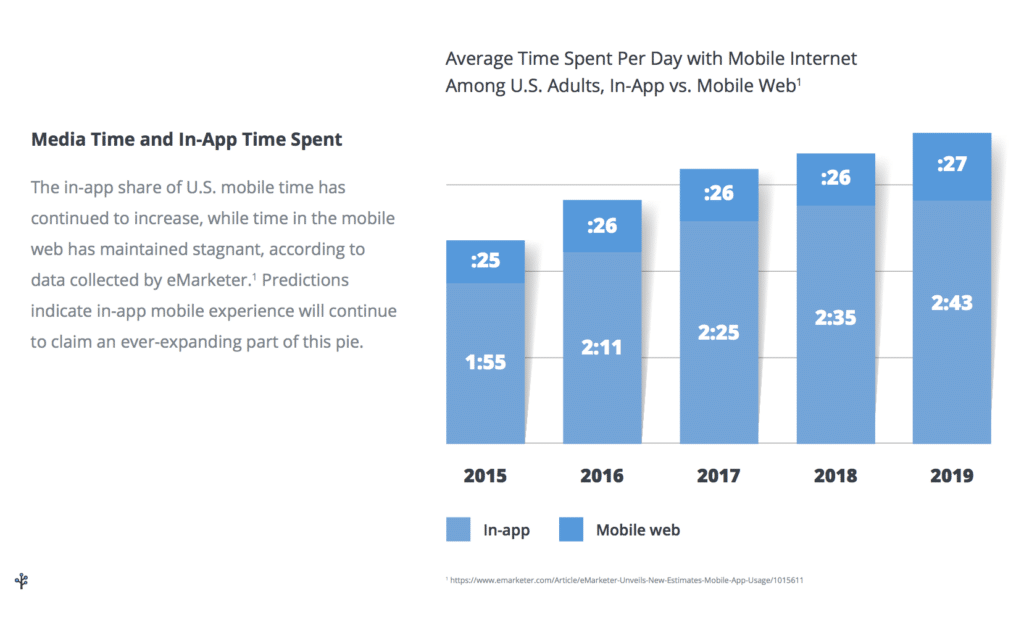As overall mobile usage increases, time in-app continues to grow. eMarketer found that the average consumer spends just over 3 hours a day on their mobile device. Of that, an overwhelming 85% of mobile time is spent in-app, while the remaining time spent in-browser is less than 30 minutes per day.
While time in-app is increasing, consumers are consolidating app usage—which means it’s more important and potentially more difficult than ever to onboard users into your app and keep them engaged after onboarding. Still, it seems that regardless of company size, one thing is constant: a multi-channel and cross-channel marketing approach is key. The most successful marketing strategies in today’s mobile world cover all the bases: organic growth, paid acquisition, virality, content, partnerships, influencers, retargeting, email, and more—across both web and app platforms.
As a mobile-first company, Strava has expertly used multiple marketing channels to achieve dramatic growth. As the leading mobile app dedicated to connecting runners and cyclists through the sports they love, Strava aims to form the largest community of athletes in the world. Due to its incredible cross-platform marketing efforts, Strava acquires one million users every 40 days—a growth statistic most mobile apps would only dream of achieving. Perhaps Joshua Weissburg, Director of Product Marketing at Zendesk, puts it best: “If you think of yourself as a cyclist, and you don’t live under a rock, you know Strava. Strava creates fiercely loyal customers using a single, cross-device communication flow.”
While email as a marketing channel is arguably integral to building and maintaining a long lasting relationship between your app and your user base, Strava has capitalized on email to strengthen its connection with its athletes and build an engaging relevant community. Unique to Strava’s email campaign strategy, however, is their cross-platform approach.
In fact, Strava observed that, among their mobile app users, app engagement was much higher if marketing emails routed app users directly into the app, rather than pushing all email link-clickers into the mobile web (where users are not logged in, and are therefore substantially less likely to convert). Specifically, Strava used Branch’s Universal Email to route users specific in-app content with just a single email click. Since using Universal Email, Strava has seen a remarkable 41% of deep linked clicks result in app engagement.
But Strava’s multi-channel marketing campaign strategy didn’t stop there. In all of its social, sharing and paid activities, Strava integrated Branch links to optimize the user experience to promote specific content within the app, seeing a 75% click-to-install rate over a two-week period in a Facebook Ad campaign alone. Furthermore, Strava launched Clubs (a new feature to allow groups of all sizes to create a workout community) with Branch deep linking, so users from the mobile web and from social pages could be linked directly to the relevant club in the app. Within the first three months, 12% of users who clicked on a Clubs link installed the app across all marketing channels. Launching Clubs resulted in a 21% increase in the number of daily installs driven from Branch links.
By deftly combining the efforts of push notifications, relevant, user based content, and deep linked email, Strava creates a unified experience in the mobile app, where the best activation and engagement rates are seen, and where the best user experience is possible. For Strava, however, this staggering mobile growth is only the beginning. As Strava’s CEO, James Quarles says, “We want Strava to become the home for your active life, and that means increasing emphasis on the indoors, on the other 55 percent of what people do.” How? By continuing to build out their cross-channel and cross-platform marketing strategy, including an increasing series of partnerships with over 300 training devices and machines, and apps such as Peloton and LiveRowing.
In order to learn more about how Strava uses a cross-platform, cross-channel marketing strategy to drive app growth and engagement, download our Strava case study.























